QuestionHi Marcus,
I have a 8 week husky puppy and im not a first time dog owner but only cared for small puppies / dogs in the past. I did research before purchasing my puppy and know that they are dogs that needs constand attention and exercise. Problem: Shiva is still sleeping in the house (even though i bought her a big kennel). She cries when left outside and only listens when she wants to. She wakes me up at 05h00 every morning to go outside and is fine as long as i stay with her but as soon as i walk back into the house she starts whining. Im also having trouble with her biting feet and hands.
If possible can you please provide some advice regarding possilbe training and how to make her understand that im the leader of the pack and not other way around
AnswerKeep in mind that Siberians, even as puppies, are well known for their strong wills and disobedience. It is something that while you can help lessen, you will have to learn to live with it too. It's all part of the fun of owning a Siberian. :)
Also, keep in mind that Siberians are pack animals - they love, want and need to be with others. If that is another dog or humans, they have a desire to be with their pack as much as possible. Add to that the fact that an 8 week old puppy just left her littermates and mother, and you have a pup who is really feeling lonely. While I hesitate to give canines human emotions, it is important to understand that this is a drastic change and goes against her very nature of being a pack animal.
My suggestion would be to keep that in mind anytime you are dealing with her - try to understand her view point in needing the interaction. It's for this reason that I recommend against keeping a Siberian, especially a young one, isolated from the pack. Inside dogs usually do much better, especially if they are in a single dog home. As the dog matures, moving it outside is more feasible and easier.
As for training, this is tough because if depends a lot on the dog. However, females are notoriously more stubborn and single female dogs (no other dogs in the household) are notoriously more stubborn than that. In that case, chances are you have a dog who is also not that food-oriented, which means that treat-training/clicker-training probably isn't going to work. Unfortunately, that's pretty much what is popular out in the training world right now. I would recommend finding a professional trainer that is used to dealing with high-drive dogs (like German Shepherds, Rottweilers, etc.). These high drive dogs are often trained with a positive/negative reinforcement method. Instead of allowing the dog to choose between following a command and receiving a treat and not following it, the dog is challenged with - follow a command and receive a reward (often pet/praise) or not follow and be reprimanded somehow (usually a collar "pop"). This method helps to get the dog to understand listening to commands because they are commands, not requests to be debated over.
Things like basic obedience work are the most effective thing to do for getting a dog to understand their order in the pack in 90% of the cases.
As for the biting - here's something I recommend and have written about many times. If you have questions about it, let me know and I can elaborate:
>>>>>>>>>>>>>>>>>>>>>>>>>>>>>>>>>>>>>>>>>>>>>>>>>>>
First, it is important to understand that dogs bite for two reasons: play and defense/aggression. Nipping and leaving red marks (and possibly breaking the skin now and then) is a normal sign of play. Siberians are well known for being an extremely playful breed, and also are well known for being very rambunctious when they play. This nipping is typical.
So, now that you understand that the dog is "playing" it should help you redirect the behavior. I personally encourage the playful interaction. Since dogs associate with their world through their mouths, and is the main way that they play, I think it shows a strong bond that the dog wants to play with an owner. So, rather than stop it, you have to set-up rules around the play. Once those rules are established, dogs generally have pretty quick time understanding and following the rules. Here's what I suggest:
First, get a pair of thick leather gloves. Ray Allen Manufacturing makes some, but you can also go to a hardware store and look for some really thick ones. I've also had luck finding leather welding gloves. They aren't cheap, but they last a long time and it's worth it for the dog. Next, put the gloves on and wrestle and play with your dog. The bites won't go through the gloves, and if the dog bites too hard and the pressure hurts, correct the dog. When play time is over (your decision), take the gloves off and put them away. If the dog tries to continue to bite/play, correct the dog. Soon, the dog will understand that gloves on equals playtime, gloves off means no.
As for the correction, it's a simple strong "NO!" and removing yourself from the situation. If the dog persists, a quick grab of the neck can also be effective. For the first few weeks, if the dog nips at you, immediately go get the gloves. This will also help teach the dog that means play. To this day, my dog (at 3 years old, and we started this method with her at 11 weeks old) will come up and bite my hand gently. I then go get the gloves and we wrestle.
>>>>>>>>>>>>>>>>>>>>>>>>>>>>>>>>>>>>>>>>>>>>>>>>>>>>>>

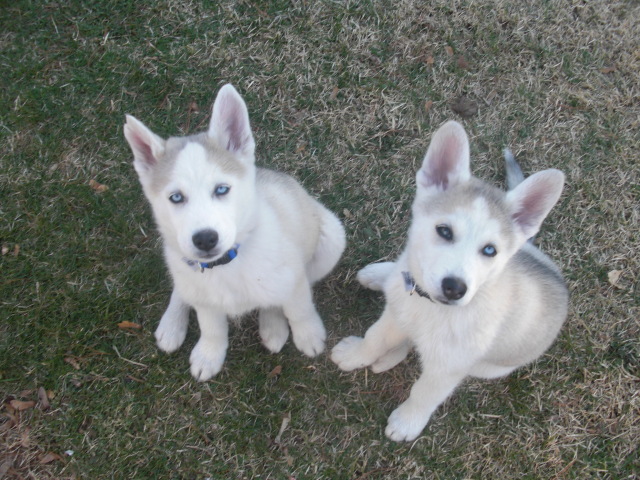 2 12 week old Husky brothers play/fighting
QuestionJasper & Sigmund
QUESTION: Two weeks
2 12 week old Husky brothers play/fighting
QuestionJasper & Sigmund
QUESTION: Two weeks
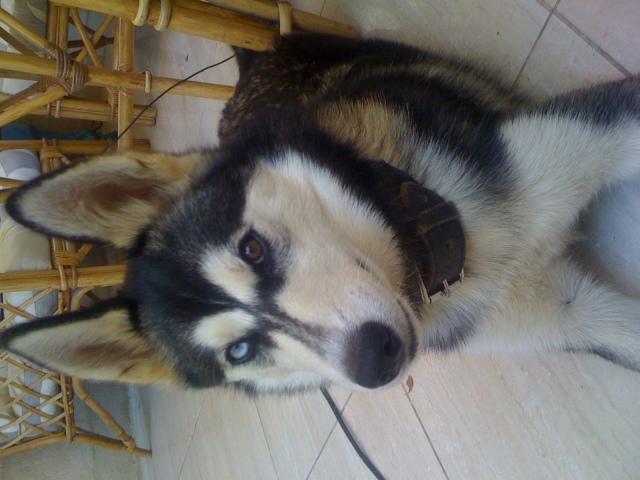 coming when called
QuestionQUESTION: hi, i have a female husky that is app
coming when called
QuestionQUESTION: hi, i have a female husky that is app
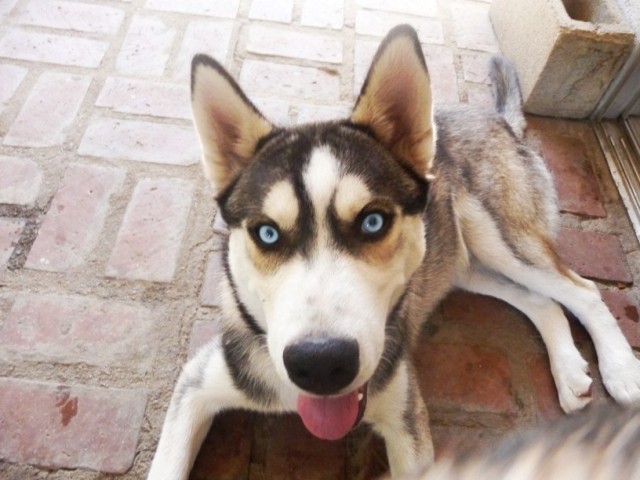 Husky Color
Question
Orion
Hi I have a beautiful 6 months old husky
Husky Color
Question
Orion
Hi I have a beautiful 6 months old husky
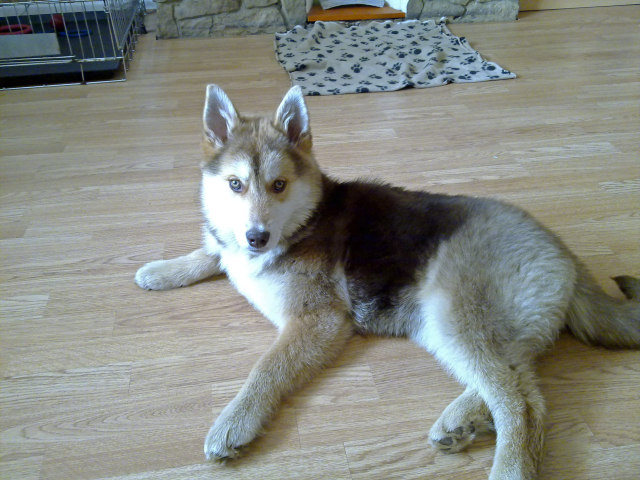 my husky colour
Question
mecca
hi i have recently got my husky mecca. s
my husky colour
Question
mecca
hi i have recently got my husky mecca. s
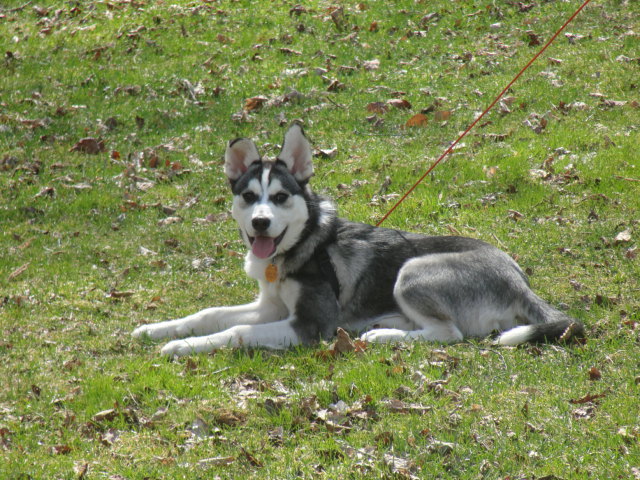 My 4 mo. old puppy
Question
Arkkan 4mo.old
I recently brought home my Sibe
My 4 mo. old puppy
Question
Arkkan 4mo.old
I recently brought home my Sibe